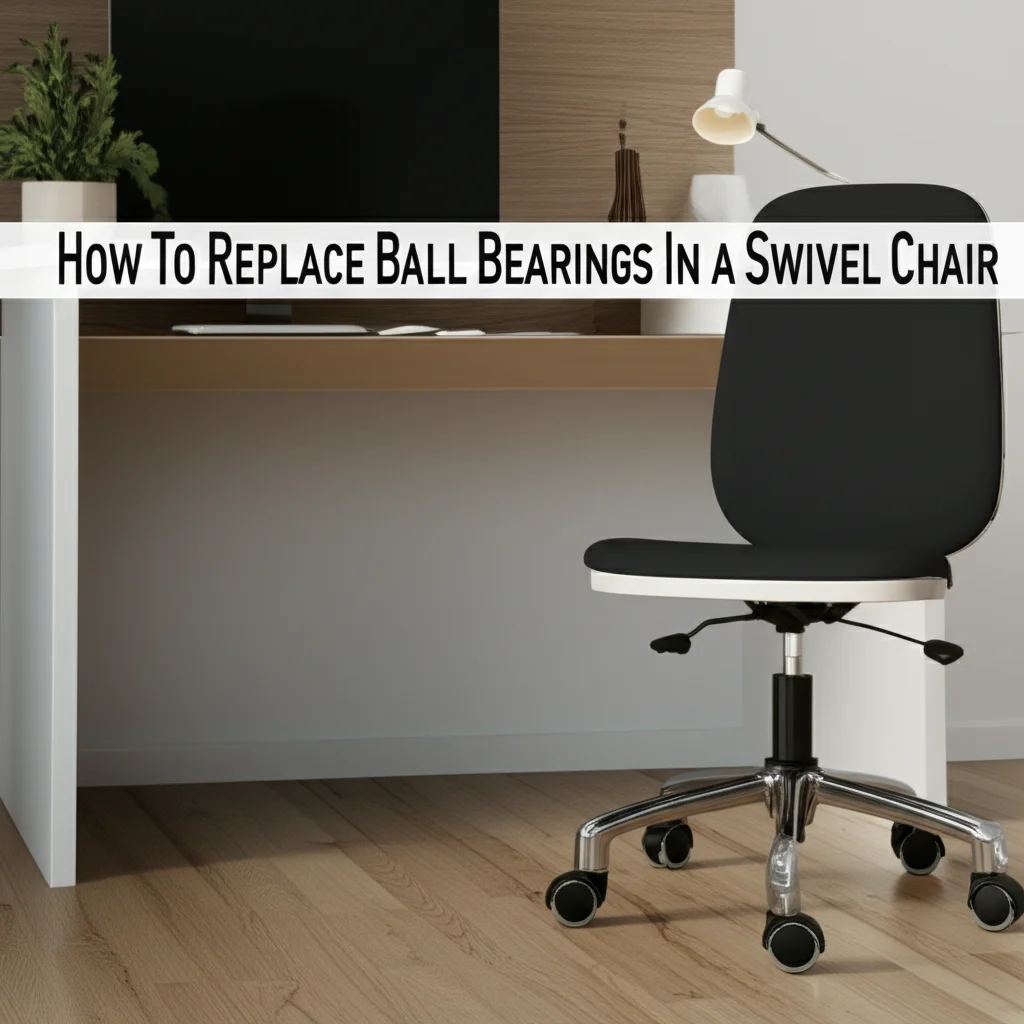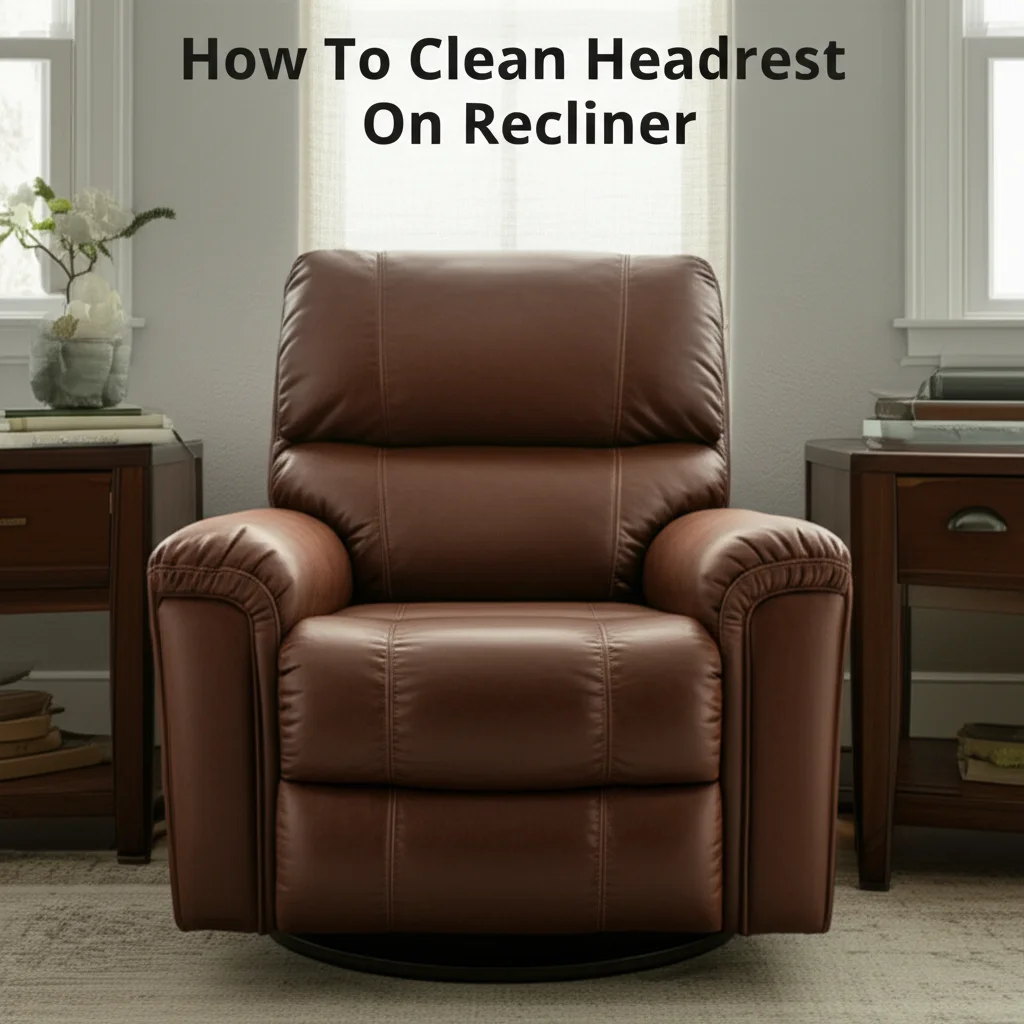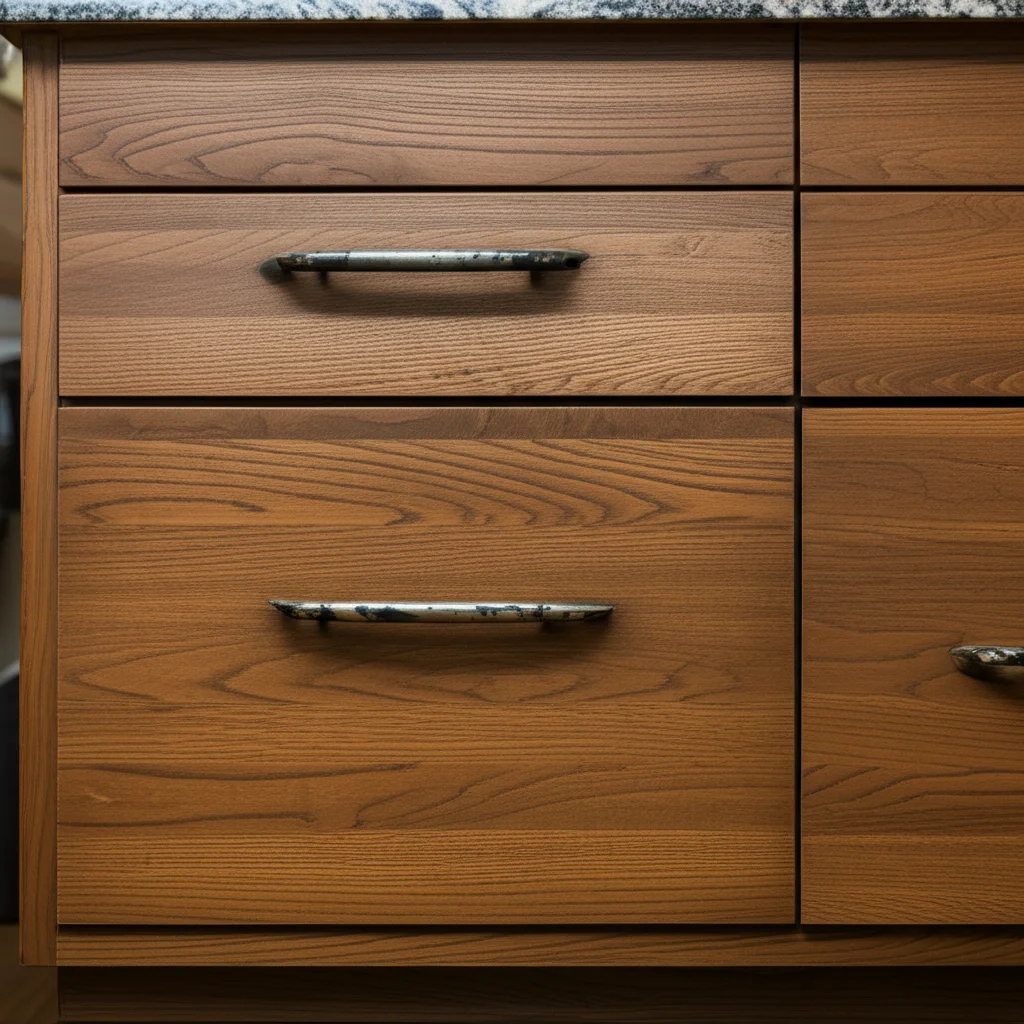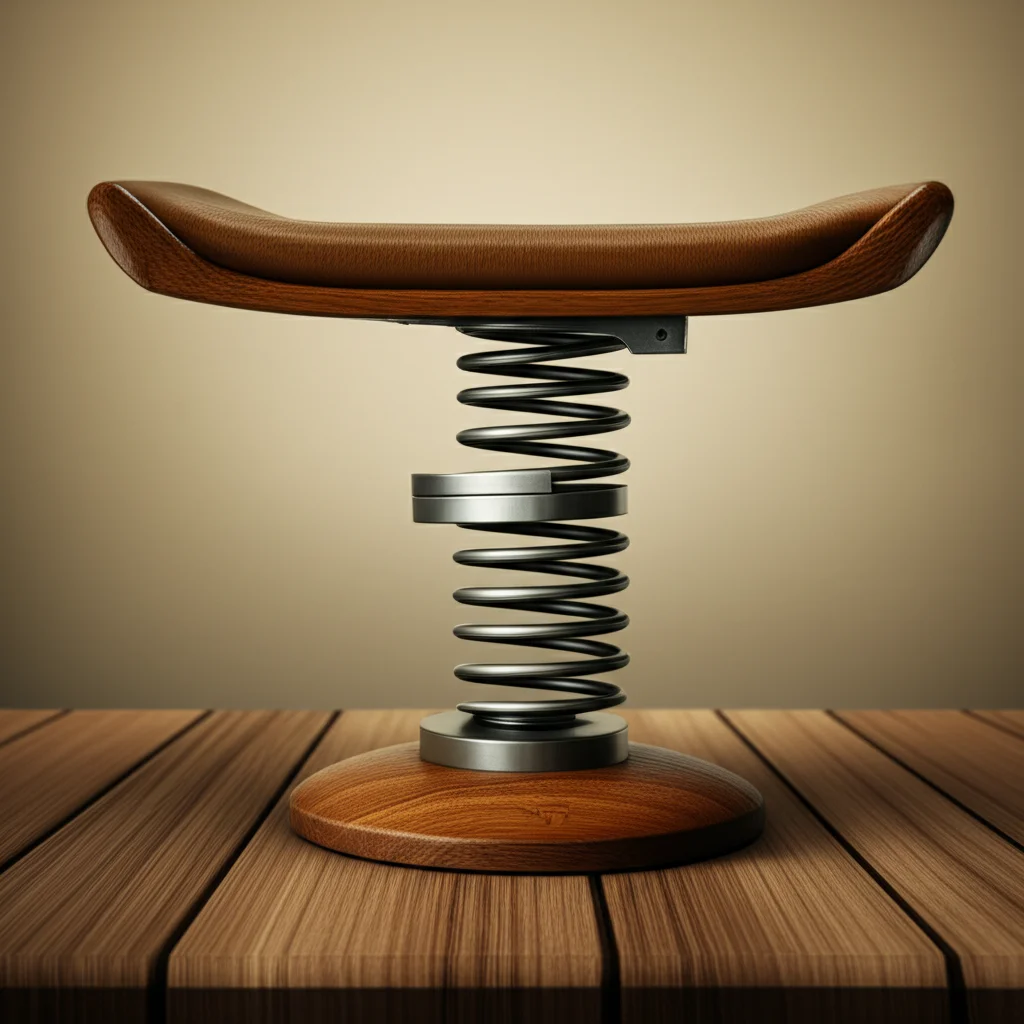· Todd Martin · Home Repair & Maintenance · 15 min read
How To Replace Ball Bearings In A Swivel Chair

Revitalize Your Ride: How To Replace Ball Bearings In A Swivel Chair
Does your swivel chair groan, squeak, or wobble when you try to move? A common culprit for these annoying sounds and instability is worn-out ball bearings. Instead of discarding your favorite chair, you can easily restore its smooth, quiet operation. Learning how to replace ball bearings in a swivel chair is a practical skill. It saves you money and gives new life to furniture.
This comprehensive guide walks you through every step. We start with understanding your chair’s components. We then cover gathering tools and performing the replacement. Finally, we provide tips for maintenance. Get ready to enjoy a chair that glides effortlessly once more.
Takeaway
Restoring your swivel chair’s smooth operation is simple. You can achieve this by following a clear process.
- Identify: Recognize signs of worn ball bearings, like squeaks or wobbles.
- Prepare: Gather the right tools and new bearings before starting.
- Disassemble: Carefully take apart the chair’s base to access the swivel mechanism.
- Clean & Replace: Remove old bearings, clean parts, and install new ones with fresh grease.
- Reassemble & Test: Put the chair back together and verify smooth movement.
- Maintain: Regular cleaning and lubrication extend the lifespan of your new bearings.
Replacing ball bearings in a swivel chair restores its function. It also prevents further damage and improves comfort.
Replacing ball bearings in a swivel chair involves disassembling the chair’s base, carefully removing the old, worn bearings from the swivel mechanism, thoroughly cleaning the bearing race and components, installing new ball bearings with fresh lubricant, and then reassembling the chair to restore its smooth, quiet swiveling function. This process fixes squeaks and wobbles effectively.
Understanding Your Swivel Chair’s Ball Bearing System
A swivel chair moves smoothly because of its ball bearing system. These small, round metal balls reduce friction. They allow the chair to rotate easily. Without them, your chair would stick or grind.
Ball bearings are inside the chair’s central swivel mechanism. They also often sit within the caster wheels. When you sit and move, these bearings handle all the stress. Over time, dirt, dust, and wear cause them to degrade. This leads to common chair problems.
Signs of worn bearings include a grinding noise. You might also hear squeaking or clicking sounds. A wobbly chair or difficulty turning are other indicators. The chair may feel stiff or refuse to spin freely. If you notice these issues, your ball bearings likely need attention. Replacing them prevents more severe damage. It also makes your chair functional again.
Types of Swivel Chair Bearings
Swivel chairs use different types of bearings. The most common are loose ball bearings. These are small individual balls that sit in a “race” or channel. Some chairs use caged ball bearings. Here, the balls are held together in a ring or cage. This makes installation easier.
Other chairs might use thrust bearings or slewing rings. These are larger, more integrated units. Knowing your chair’s type helps you buy the correct replacement parts. Always inspect your chair first. Look closely at the existing bearings. This ensures you purchase compatible new ones for a perfect fit.
Essential Tools and Materials for Bearing Replacement
Before you start, gather all necessary tools. Having everything ready saves time and frustration. The right equipment makes the job safer and more efficient. Do not rush this preparation step.
You will need basic hand tools. A set of wrenches is helpful. An adjustable wrench works well for different nut sizes. Screwdrivers, both Phillips and flathead, are often required. A rubber mallet can assist with stubborn parts. Pliers are good for gripping small items.
Safety gear is important. Wear work gloves to protect your hands. Safety glasses shield your eyes from debris. A clean, spacious work area is also vital. This prevents losing small parts.
Sourcing New Ball Bearings
Finding the right replacement ball bearings is crucial. You must match the size and type. First, carefully remove an old bearing or inspect the existing ones. Measure their diameter. Note if they are loose or caged.
Many hardware stores carry common bearing sizes. You can also find them online. Furniture parts suppliers specialize in chair components. Take photos of your chair’s mechanism. This helps you describe what you need to a seller. Buying a few extra bearings is a good idea. They are small and easy to lose. Remember to get appropriate grease for the bearings. Lithium grease or bearing grease works well. This lubrication ensures smooth operation. It also protects the new bearings from wear.
Dismantling Your Swivel Chair: Step-by-Step
Taking apart your swivel chair might seem challenging. However, it is a straightforward process. Approach it methodically. Each chair model may differ slightly. The general steps remain consistent.
First, clear your workspace. You need enough room to maneuver the chair. Lay down a blanket or cardboard. This protects your floor and prevents small parts from rolling away. Invert the chair. Place it upside down on your prepared surface. This gives you easy access to the base.
Most swivel chairs have a central gas lift cylinder. This connects the seat to the base. The base itself often consists of legs and a wheel assembly. You need to separate these components.
Removing the Chair Base and Gas Lift
Locate the retaining clips or bolts that hold the gas lift to the chair seat. Use a screwdriver or wrench to remove them. Sometimes, the gas lift is just pressed into the mechanism. In this case, a rubber mallet can help. Gently tap the top of the gas lift where it meets the seat mechanism. This should loosen it.
Next, separate the gas lift from the chair base. The base usually has a central hole. The gas lift slides into this. Often, a strong pull is enough to detach it. If it is stuck, apply gentle rocking motion. Some bases might have a bolt or pin holding the gas lift in place. Remove any fasteners you find.
Once the gas lift is separated, you can fully remove the chair base. This base typically houses the swivel mechanism itself. This mechanism is where the ball bearings are located. Carefully set aside all removed parts. Keep track of any small screws or washers. A small container or magnetic tray helps organize them. You now have access to the core components that need repair.
Removing the Old Ball Bearings and Cleaning the Mechanism
Now comes the crucial part: accessing and dealing with the old bearings. This step requires a gentle touch. Old bearings can be brittle or fall apart easily. They may also be coated in grime.
Carefully lift the top plate of the swivel mechanism. You might need a screwdriver to pry it open. The ball bearings are typically nestled in a circular channel, called a race. Some chairs use loose ball bearings. These will spill out when the mechanism separates. Others might have caged bearings. These remain together in their ring.
Observe how the old bearings are arranged. Take a picture if it helps. This provides a reference for reassembly. Gently remove all old ball bearings. If they are loose, collect them in a container. They are often dirty and may have metal fragments. This indicates wear. Inspect the old bearings for signs of damage. Look for flatness, pitting, or rust. These are clear signs of wear. If you find significant damage, replacement is necessary. Sometimes, cleaning might seem like an option if the bearings are just dirty. However, if they are worn, cleaning them will not fix the problem. You might consider cleaning chair components, like the wheels, during this process for general maintenance. For example, learning how to clean wheel bearings can be useful for chair casters.
Thorough Cleaning and Greasing
After removing the old bearings, thoroughly clean the bearing races. Use a clean cloth or paper towels. Remove all old grease, dirt, and metal debris. A degreaser or mild solvent can help dissolve stubborn grime. Ensure all surfaces are spotless. Any leftover grit will quickly damage your new bearings.
While you are at it, consider cleaning other parts of the chair’s base. The chair’s wheels, for instance, can collect a lot of dirt and hair. A quick clean can improve overall chair performance. You can find helpful guides on how to clean chair wheels or specifically how to clean office chair wheels. Clean wheels reduce friction on your floor. They also make moving the chair easier.
Once everything is clean, apply fresh grease to the bearing races. A thin, even layer is sufficient. High-quality lithium grease or general-purpose bearing grease works best. This lubricant reduces friction. It also protects the new bearings from wear and corrosion. Do not over-grease. Too much grease can attract dirt. It also makes a mess. The goal is smooth, protected surfaces for the new bearings.
Installing New Ball Bearings and Reassembling the Chair
With the chair mechanism clean and ready, you can now install the new ball bearings. This is a precise step. Proper placement ensures smooth operation and extends the life of your repair.
If you are using loose ball bearings, carefully place them into the greased bearing race. Arrange them evenly around the circular channel. Ensure they fill the race without overcrowding. There should be a small gap between each ball. This allows them to move freely. If you have caged bearings, simply place the entire cage into the race. The cage holds the balls in their correct spacing.
Apply a small amount of additional grease on top of the newly installed bearings. This provides extra lubrication for the top plate. Carefully align the top plate of the swivel mechanism. Gently lower it onto the bearing race. Make sure it sits flush. The new bearings should be securely sandwiched between the two plates.
Reattaching the Chair Base and Testing
Now, reassemble the chair components. Reattach the chair base to the swivel mechanism. Secure any bolts or clips you removed earlier. Ensure all fasteners are tight. Do not overtighten, as this can compress the bearings too much. This can lead to stiffness or damage.
Next, reattach the gas lift cylinder. Slide it back into its slot in the chair base. If it had retaining clips or bolts, secure them now. Finally, attach the chair seat to the top of the gas lift. This connection usually involves a simple press fit. Push the seat down firmly onto the gas lift. You might hear a click as it locks into place.
Once fully reassembled, test the chair’s function. Sit on the chair and try to swivel. It should turn smoothly and quietly. Listen for any grinding or squeaking sounds. If it still makes noise, or if it feels stiff, you may need to adjust the tightness of the bolts. You might also need to recheck the bearing placement. Sometimes, a few turns can help the new bearings settle into their positions. A successfully repaired chair will glide and rotate effortlessly.
Troubleshooting Common Issues After Bearing Replacement
Even after replacing the ball bearings, you might encounter issues. Do not get discouraged. Most problems are simple to fix. Identifying the cause helps you make the right adjustment.
One common problem is the chair still squeaking or wobbling. If it squeaks, check if all parts are clean. Residual dirt or old grease can cause noise. Ensure every ball bearing is properly seated and lubricated. A wobble might mean a loose bolt or an incorrectly seated gas lift. Double-check all fasteners. Make sure the gas lift is fully engaged in both the base and the seat mechanism. Sometimes, the issue is not the bearings but the gas lift itself. If the chair sinks, the gas lift needs replacement.
Another issue is the chair not swiveling smoothly. This can happen if you overtightened the bolts holding the swivel mechanism together. Loose bearings might also be the cause. Slightly loosen the bolts to allow more play. Or, if you used loose bearings, ensure there are enough of them. An insufficient number of bearings will cause friction. Too many can also cause binding. Aim for an almost complete circle of bearings with slight gaps.
Other Potential Issues
Sometimes, problems can stem from unrelated parts. If the chair feels stiff, check the gas lift’s connection points. Dirt or corrosion can impede its movement. If the chair leans, the issue might be a bent chair leg or a damaged mounting plate. Bearings primarily affect rotation. Other components affect stability or height adjustment.
Always re-check your work. Did you miss a small washer? Is a part misaligned? A systematic review of the assembly steps can reveal forgotten details. If the problem persists, consider the quality of your new bearings. Poor quality bearings can cause issues right after installation. Buying from reputable suppliers helps avoid this. Ultimately, most post-replacement issues come down to alignment, cleanliness, or proper tightening. Patience and careful re-inspection usually solve them.
Maintenance Tips to Extend Swivel Chair Life
Replacing ball bearings makes your swivel chair new again. Proper maintenance helps keep it that way. Regular care prevents future problems. It extends the life of your chair significantly.
First, keep your chair clean. Dust, hair, and debris accumulate in the swivel mechanism. They also collect around the wheels. This grime works its way into the bearings. It causes friction and wear. Use a vacuum cleaner to remove loose dirt from the base and wheels. A damp cloth can wipe down surfaces. Perform this cleaning every few months.
Second, lubricate moving parts periodically. Even new bearings benefit from fresh grease. Reapply a small amount of lithium grease to the swivel mechanism every year or two. This ensures continuous smooth movement. It also protects components from rust. Do not forget to lubricate the chair wheels. A small drop of silicone spray or light oil on the wheel axles can make them roll better.
Proper Use and Inspection
Avoid exceeding your chair’s weight limit. Overloading puts excessive stress on the bearings and other components. This speeds up wear and tear. Use the chair for its intended purpose. Do not stand on it. Avoid sudden, forceful movements or spinning rapidly. Gentle use helps preserve its integrity.
Regularly inspect your swivel chair. Look for signs of wear. Check for loose bolts, cracks, or excessive wobbling. Listen for new squeaks or grinding sounds. Address small issues promptly. Tighten loose fasteners right away. If you hear a minor squeak, try lubricating the area. Early intervention prevents minor issues from becoming major repairs.
Keep the area around your chair clean. Floors free of debris reduce the amount of dirt tracked into the chair’s wheels and mechanism. If you use a chair mat, ensure it is clean as well. Following these simple maintenance tips saves you from frequent repairs. Your swivel chair will remain comfortable and functional for many years.
FAQ Section
How often should I replace ball bearings in a swivel chair?
The frequency depends on chair use and quality. For heavy daily use, bearings might need replacement every 3-5 years. For lighter use, they can last 5-10 years or more. Replace them when you notice significant squeaking, grinding, wobbling, or difficulty swiveling, as these are clear signs of wear.
Can I just clean the old bearings instead of replacing them?
You can clean old bearings if they are only dirty and not visibly worn or damaged. Cleaning removes grime and old grease, which might restore some smoothness. However, if the bearings are pitted, flattened, or rusted, cleaning will not fix the underlying wear. In such cases, replacement is the only effective solution for lasting repair.
What type of grease should I use for chair ball bearings?
Use a high-quality, general-purpose bearing grease. Lithium grease is an excellent choice. It provides good lubrication, resists water, and works well for metal-on-metal contact. Apply a thin, even layer to the bearing races and the bearings themselves. Avoid using thin oils, as they may not provide lasting lubrication and can attract more dirt.
Where do I buy replacement ball bearings for chairs?
You can find replacement ball bearings at hardware stores, automotive supply stores, or online retailers like Amazon. Specialty furniture repair shops or office chair parts suppliers also carry them. Be sure to measure the diameter of your existing bearings and note if they are loose or caged to ensure you purchase the correct size and type.
Is it hard to replace ball bearings in a swivel chair?
Replacing ball bearings in a swivel chair is a DIY-friendly task. It requires basic tools and a methodical approach. The most challenging part is often detaching stubborn components or ensuring all small parts are tracked. With clear instructions and patience, most people can complete this repair successfully.
Conclusion
Bringing your squeaky, wobbly swivel chair back to life is a rewarding project. We have covered the entire process of how to replace ball bearings in a swivel chair, from diagnosis to final reassembly. You now understand the tools needed and the specific steps involved. This includes careful dismantling, thorough cleaning, and precise installation of new components.
By following these instructions, you can restore your chair’s smooth, quiet operation. This not only saves you the cost of a new chair but also gives you a sense of accomplishment. Regular cleaning and occasional lubrication of your chair’s parts will help keep it in top condition. Enjoy your newly repaired chair. It will provide comfort and smooth movement for many more years to come. Take on this practical home repair today!





